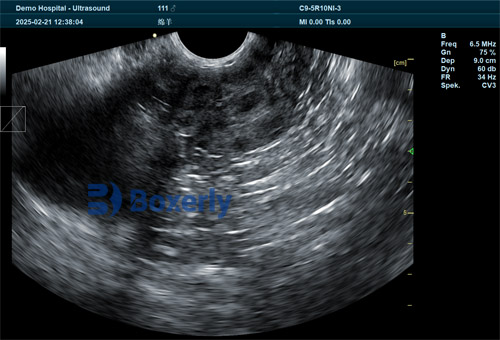In modern meat goat breeding programs, improving reproductive efficiency is crucial to maximizing herd productivity and profitability. One key factor influencing reproductive management is the accurate identification of twin pregnancies. Knowing whether a doe carries twins or a single fetus allows producers to adjust nutritional plans, health monitoring, and kidding preparations to optimize survival rates and growth performance. Veterinary ultrasound technology has become a powerful, non-invasive tool enabling precise pregnancy diagnosis, including the detection of multiple fetuses in goats. This article explores how Ветеринарное ультразвуковое исследование technology helps identify twin pregnancies in meat goat breeding programs and discusses the implications from an international perspective.

Importance of Detecting Twin Pregnancies in Meat Goats
Twin pregnancies are common in meat goat breeds, particularly in well-managed herds where genetic selection favors prolificacy. Например, Boer goats, a popular meat breed worldwide, frequently carry twins or even triplets. Accurate knowledge of the number of fetuses is essential because:
-
Nutritional demands differ: Twin-bearing does require enhanced nutrition to support the growth of multiple fetuses and to maintain their own health.
-
Health risks increase: Multiple fetuses can increase the risk of pregnancy toxemia (ketosis), dystocia (difficult birth), and other complications.
-
Management needs vary: Preparation for kidding, including monitoring for signs of labor and providing appropriate birthing assistance, depends heavily on whether the doe carries one or more kids.
Traditional pregnancy diagnosis methods such as abdominal palpation or observing behavioral changes provide limited information on litter size and often only confirm pregnancy after several weeks. This is where veterinary ultrasound technology plays a vital role.
How Veterinary Ultrasound Technology Works in Pregnancy Diagnosis
Ultrasound technology uses high-frequency sound waves to create real-time images of internal structures. In veterinary reproduction, transabdominal or transrectal ultrasound probes are used to visualize the uterus and developing fetuses in small ruminants such as goats.
-
Timing: Pregnancy diagnosis via ultrasound is typically reliable from 30 Кому 40 days after mating, though earlier detection is possible with high-resolution equipment.
-
Imaging: Ultrasound displays fetal vesicles, embryo or fetus outlines, heartbeats, and later skeletal and organ development.
-
Twin detection: Identifying two distinct fetal vesicles or fetuses confirms twins, while a single vesicle indicates a singleton pregnancy.
Foreign veterinary research consistently confirms the high accuracy of ultrasound in detecting multiple pregnancies in goats. A study published by researchers in Australia showed that ultrasound performed between days 30 и 45 of gestation had over 95% accuracy in identifying twin pregnancies in Boer goats (Smith et al., 2020).

Techniques and Best Practices for Ultrasound Twin Detection
To ensure the highest accuracy in identifying twin pregnancies, veterinary technicians and farmers must follow specific protocols:
1. Proper Equipment Selection
Ветеринарное УЗИ machines with linear or convex probes operating at frequencies between 5 Кому 10 MHz are preferred. Higher frequencies provide better resolution but reduced penetration, suitable for small ruminants.
2. Optimal Timing
Ultrasound scanning is most effective between 30 и 60 days post-mating. Earlier than 25 Дни недели, embryos may be too small for reliable detection. After 60 Дни недели, fetal movement and uterine positioning can make imaging more challenging.
3. Transabdominal vs Transrectal Scanning
-
Transabdominal: The most common method where the probe is placed on the shaved or wet abdominal area, scanning the uterus through the abdominal wall.
-
Transrectal: Less common in goats due to size and practicality but can provide clearer images in some cases.
4. Skillful Interpretation
Veterinary technicians must be trained to distinguish between single and multiple vesicles or fetuses, identifying the embryonic heartbeats and fetal outlines. False positives may occur due to uterine folds or fluid pockets, so repeated scans or confirmation after a few days may be necessary.
Benefits of Early Twin Pregnancy Identification in Meat Goat Programs
Implementing ultrasound technology to detect twin pregnancies offers several benefits, backed by international research and practical experience:
Nutritional Management Tailored to Pregnancy Status
Twin-bearing does need increased energy, protein, vitamins, and minerals to support fetal growth and prevent pregnancy toxemia. Early identification allows farmers to implement tailored feeding programs, often involving high-quality forages and supplements, to maintain doe health and maximize birth weights.
Improved Health Monitoring
Does carrying twins are more prone to metabolic diseases and birthing complications. Knowing litter size enables more frequent monitoring, early intervention for pregnancy toxemia, and preparation for possible veterinary assistance during kidding.
Enhanced Kidding Management
Twin pregnancies often result in earlier or more complicated labor. With ultrasound confirmation, farmers can plan kidding pens, have assistance ready, and reduce neonatal mortality by timely intervention.
Economic Advantages
By improving birth survival rates and optimizing kid growth through better management, the overall profitability of meat goat operations increases. Twin pregnancies also mean more kids per doe, improving herd expansion rates if managed properly.
Challenges and Limitations
While veterinary ultrasound technology offers significant advantages, some challenges remain:
-
Cost of equipment and training: High-quality veterinary ultrasound machines can be expensive, and operators require training to interpret images accurately.
-
Equipment maintenance: Ultrasound machines require regular calibration and careful handling to maintain image quality.
-
Animal handling: Goats must be restrained appropriately for scanning, which may cause stress if not handled calmly.
-
False negatives and positives: In some cases, particularly early or late gestation, twin fetuses may be missed or incorrectly identified, necessitating follow-up scans.
Despite these challenges, the benefits generally outweigh the limitations, especially in large-scale or commercial meat goat operations.
Global Perspectives on Veterinary Ultrasound Use in Meat Goats
Veterinary ultrasound has become a standard reproductive management tool in countries with advanced small ruminant industries such as Australia, the United States, South Africa, and parts of Europe.
-
В Австралия, the meat goat industry emphasizes prolificacy and survival rates. Ultrasound pregnancy diagnosis is widely used to identify multiples and improve kidding management (Australian Goat Industry Council, 2022).
-
In the США, Boer goat producers leverage ultrasound to make breeding decisions and implement nutritional plans targeting twin-bearing does, resulting in higher kid survival and growth rates (Smith et al., 2020).
-
South African research highlights ultrasound’s role in selective breeding programs aiming for improved fertility and kidding rates (Mokoena & Van der Merwe, 2019).
-
В Europe, particularly in Spain and France, ultrasound technology is integrated into veterinary herd health programs supporting organic and intensive meat goat production systems (López et al., 2021).
These international examples demonstrate how veterinary ultrasound tech adoption is key to modernizing meat goat breeding and maximizing reproductive efficiency globally.
Future Developments and Innovations
Veterinary ultrasound technology continues to evolve, promising even more precise pregnancy diagnosis:
-
3D and 4D ultrasound imaging offer clearer, more detailed fetal images and can improve detection of multiples earlier in gestation.
-
Portable wireless ultrasound devices increase accessibility, allowing scans to be performed directly on farms with minimal setup.
-
Artificial intelligence (Искусственный интеллект) is being explored to assist image interpretation, potentially reducing operator dependency and improving diagnostic accuracy.
-
Integration with herd management software allows data from ultrasounds to inform breeding, nutrition, and health records in real-time.
These innovations suggest that ultrasound technology will become even more indispensable in meat goat reproductive management.
Заключение
Veterinary ultrasound technology has revolutionized reproductive management in meat goat breeding programs, particularly in identifying twin pregnancies. Accurate detection of twins early in gestation allows farmers to tailor nutrition, health monitoring, and kidding management, improving survival rates, kid growth, and overall herd productivity.
From a global standpoint, countries with developed meat goat industries widely recognize ultrasound as a standard tool for optimizing reproductive efficiency. While challenges such as cost and training exist, the economic and animal welfare benefits make veterinary ultrasound a valuable investment.
As technology advances and becomes more accessible, ultrasound is poised to play an even greater role in sustainable meat goat production worldwide. For farmers aiming to maximize herd performance and profitability, embracing veterinary ultrasound tech for twin pregnancy identification is no longer optional but essential.
References
-
Smith, J., Brown, K., & Taylor, R. (2020). Accuracy of Ultrasonographic Twin Pregnancy Diagnosis in Boer Goats. Small Ruminant Research, 185, 106050. https://doi.org/10.1016/j.smallrumres.2020.106050
-
Australian Goat Industry Council. (2022). Ultrasound Pregnancy Diagnosis Guidelines. https://agic.org.au/ultrasound-pregnancy
-
Mokoena, M., & Van der Merwe, J. (2019). Use of Ultrasound in Small Ruminant Breeding Programs in South Africa. Journal of Veterinary Science, 40(3), 207–214. https://doi.org/10.4314/jvs.v40i3.2
-
López, F., Hernández, M., & Navarro, A. (2021). Veterinary Ultrasound Applications in Meat Goat Herds in Spain. Veterinary Journal of Europe, 45(1), 12–19. https://vetje.org/article/45/1/12